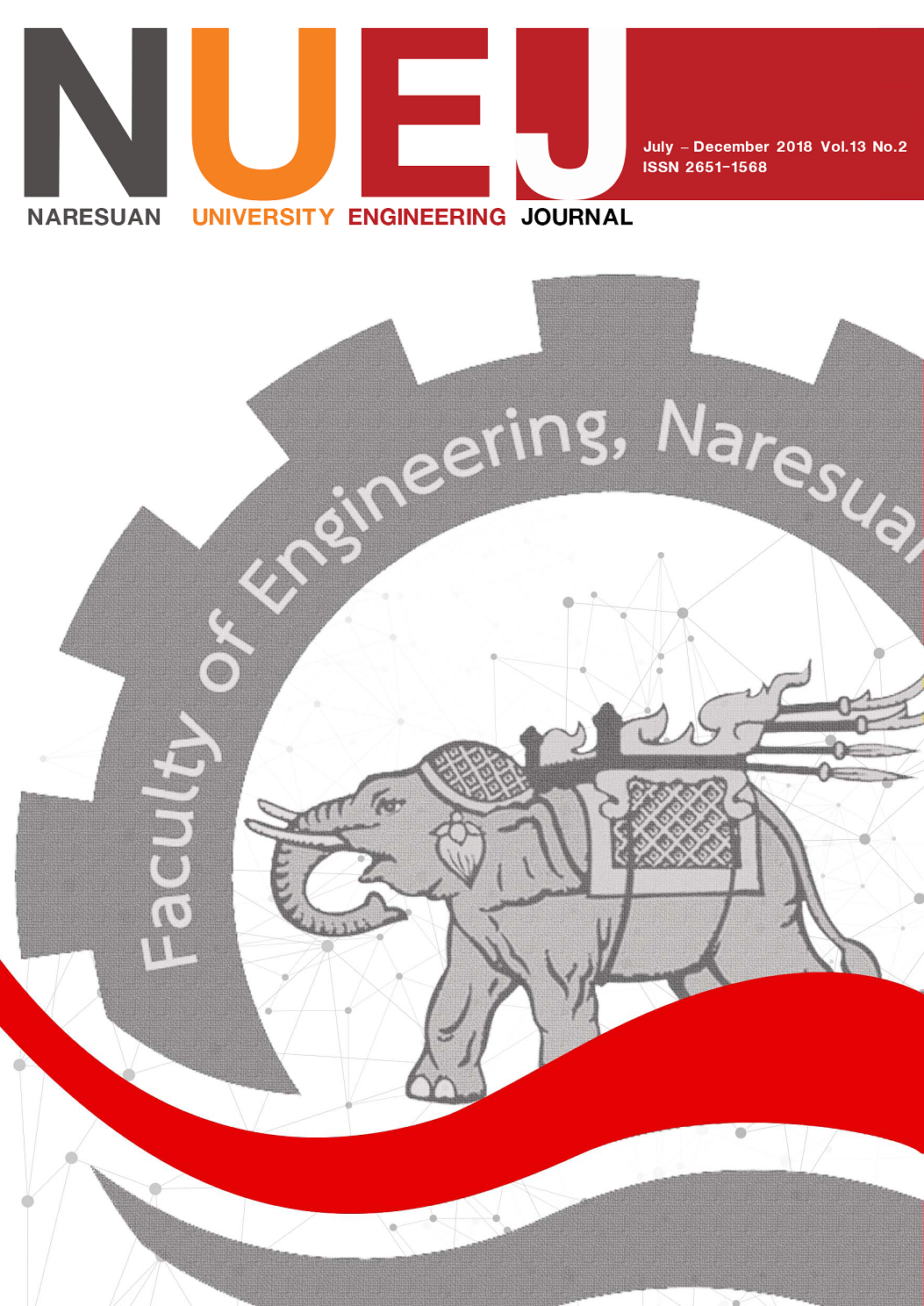Effects of Stack and Heat Exchanger Configurations on Thermal Performance of a Thermoacoustic Refrigerator
Main Article Content
Abstract
This paper discusses the influences of relevant parameters on thermal performance of a standing wave thermoacoustic refrigerator. The effects of the parameters, such as oscillating frequency, stack and heat exchanger configurations were investigated. The thermoacoustic refrigerator built for the current study comprised of a PVC resonator pipe of 1.05 metre in length and 2 inches of nominal diameter. A loudspeaker was installed at one end of the resonator pipe to oscillate the air, which was used as the working gas. Electrical power supplied to the loudspeaker was fixed at 42 W for the whole experiment. There were three set of stacks selected in this experiment; paralleled PVC sheet stacks of 3.5 cm and 10 cm long and aluminium wire mesh screen stack with a total length of 10 cm. Three heat exchangers were used; 2.0 cm and 22 cm long galvanized steel sheet heat exchanger and 2.0 cm long copper finned heat exchanger were included in the test. In the current study, the thermal performance of the refrigerator was represented in terms of air temperature at the cold end and hot end stack, room temperature and their differences. The results revealed that the resonant frequency was found at around 80 Hz. The system with aluminium wire mesh screen stack provided the best thermal performance comparing to paralleled plate stacks. The optimum stack position was at 70 cm measurement from the front of the loudspeaker. The lowest air temperature at the cold end stack was 7oC below the room temperature, which could contribute to the installation of the copper finned heat exchanger
Article Details
References
[2] Saechan, P., Kang, H., Mao, X., & Jaworski, A. J. (2013). Thermoacoustic refrigerator driven by a combustion-powered thermoacoustic engine-demonstrator of device for rural areas of developing countries. In Lecture Notes in Engineering and Computer Science, World Congress on Engineering, London, UK, 3 - 5 July 2013, 2097-2102.
[3] Jaworski, A. J., & Mao, X. (2013). Development of thermoacoustic devices for power generation and refrigeration. In Proceedings of the Institution of Mechanical Engineers, Part A: Journal of Power and Energy, 227(7), 762-782.
[4] Gardner, D. L., & Howard, C. Q. (2009). Waste-heat-driven thermoacoustic engine and refrigerator. In Proceedings of Acoustics 2009, Adelaide, Australia, 23-25 November 2009,
[5] Starr, R., Bansal, P. K., Jones, R. W., & Mace, B. R. (1996). The reality of a small household thermoacoustic refrigerator. International Refrigeration and Air Conditioning Conference, Indianapolis, United States, 323-328.
[6] Tijani, M. E. H., Zeegers, J. C. H., & De Waele, A. T. A. M. (2002). Design of thermoacoustic refrigerators. Cryogenics, 42, 49-57.
[7] Tijani, M. E. H., Zeegers, J. C. H., & De Waele, A. T. A. M. (2002). The optimal stack spacing for thermoacoustic refrigeration. The Journal of the Acoustical Society of America, 112(1), 128-133.
[8] Piccolo, A. (2013). Optimization of thermoacoustic refrigerators using second law analysis. Applied Energy, 103, 358-367.
[9] Nouh, M. A., Arafa, N. M., & Abdel-Rahman, E. (2014). Stack parameters effect on the performance of anharmonic resonator thermoacoustic heat engine. Archive of Mechanical Engineering, 61(1), 115-127.
[10] Assawamartbunlue, K., & Kanjanawadee, P. (2009). Experimental demonstration of thermoacoustic cooling. Journal of Research in Engineering and Technology, 6(1), 1-24.
[11] Supperm, S., Jangsawang, W., & Mingmuang, N. (2010). Study of sound wave cooling. Srinakharinwirot University Journal of Science and Technology, 2, 106-114.
[12] Dhuchakallaya, I., & Saechan, P. (2015). Numerical and experimental study on the stack geometry affecting on the cooling performance of the thermoacoustic refrigerator. Journal of King Mongkut’s University of Technology North Bangkok, 25(3), 381-392.
[13] Garrett, S. L., Perkins, D. K., & Gopinath, A. (1994). Thermoacoustic refrigerator heat exchangers: Design, analysis and fabrication. In Proceedings of the 10th International Heat Transfer Conference, Brighton, United Kingdom, 375-380.
[14] Nsofor, E. C., Celik, S., & Wang X. (2007). Experimental study on the heat transfer at the heat exchanger of the thermoacoustic refrigerating system. Applied Thermal Engineering, 27, 2435-2442.
[15] Swift, G.W. (1988). Thermoacoustic engines. Journal of the Acoustical Society of America, 84(4), 1145-1180.
[16] Tijani, M. E. H., Zeegers, J. C. H., & De Waele, A. T. A. M. (2002). Prandtl number and thermoacoustic refrigerators. The Journal of the Acoustical Society of America, 112(1), 134-143.
[17] Sekisui Chemical (2008). ESLON SCH80 PVC & CPVC Piping Systems Specifications & Engineering Manual (1st ed., 112). Tokyo, Japan: Sekisui Chemical.
[18] Çengel, Y. A., & Boles, M. A. (2007). Thermodynamics: An engineering approach (6th ed., pp. 855) Singapore: McGraw-Hill.
[19] Wheatley, J., Hofler, T., Swift, G. W., & Migliori, A. (1983). An intrinsically irreversible thermoacoustic heat engine. The Journal of the Acoustical Society of America, 74(1), 153-170.
[20] Swift, G.W. (1995). Thermoacoustic engines and refrigerators. Physics Today, 48(7), 22-28.
[21] Kim, J. H., Simon, T. W., & Viskanta, R. (1993). Journal of heat transfer policy on reporting uncertainties in experimental measurements and results. Journal of Heat Transfer, 115(1), 5-6.
[22] Miller, V. R. (2002). Recommended guide for determining and reporting uncertainties for balances and scales. US Department of Commerce, Technology Administration, National Institute of Standards and Technology.
[23] Dieck, R. H., Steele, W. G., & Osolsobe, G. (2005). Test Uncertainty. ASME PTC 19.1-2005. New York: American Society of Mechanical Engineers.


